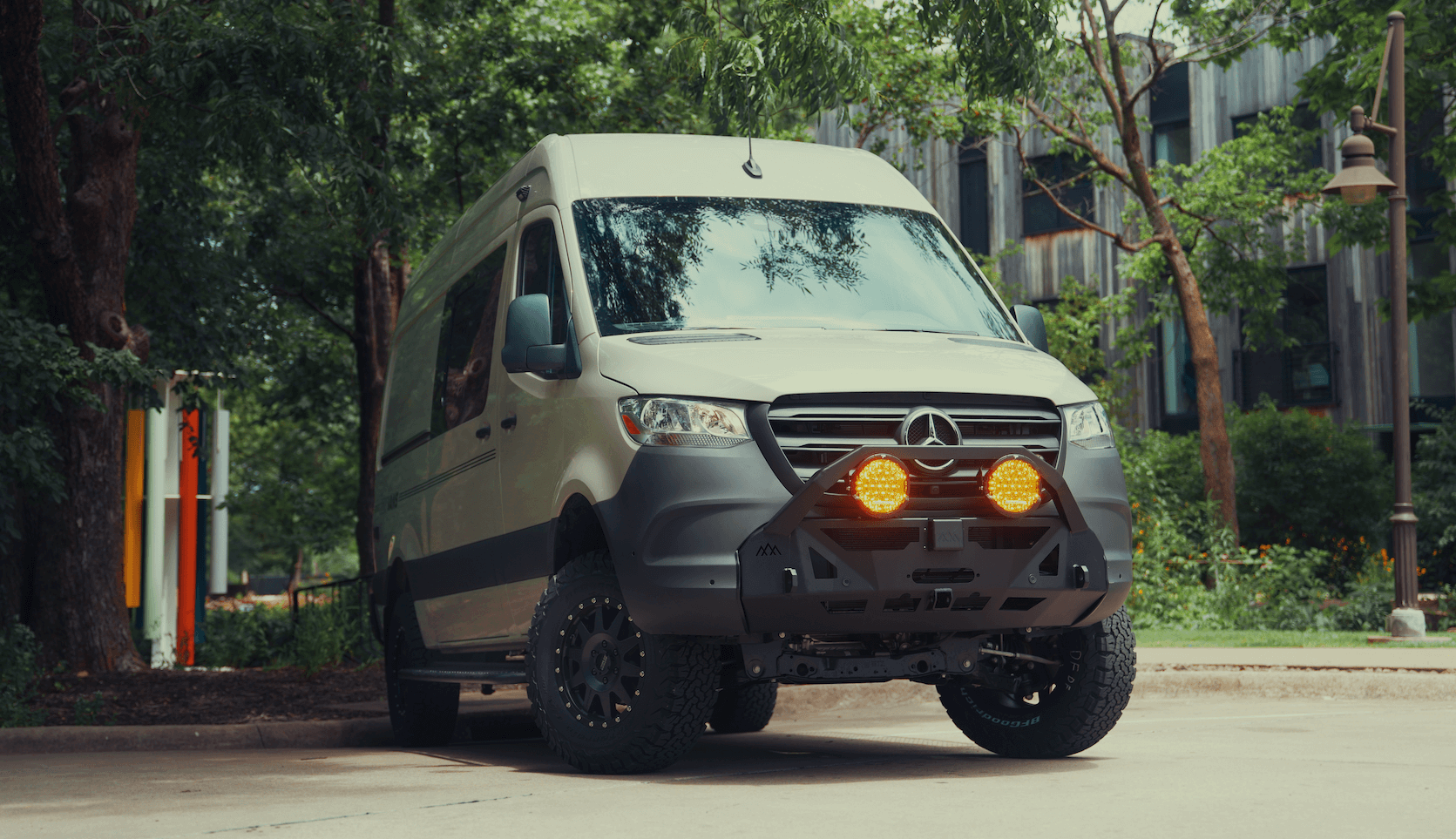Recreational Vans

Payload is everything your van carries beyond its curb weight. That includes people, pets, water, fuel beyond the base tank level, tools, cabinets, batteries, bikes, and tongue weight from a trailer. Staying inside payload capacity keeps braking distances predictable, handling stable, and tires within their designed load.
Key labels and ratings to know before you roll onto a scale:
Exceeding GVWR or an axle rating can cause premature brake fade, accelerated suspension wear, and tire overheating. Insurance issues may also arise after a collision if the vehicle was overloaded. Because upfits, accessories, and gear vary widely, the only way to know your true operating weight is to measure it.
Before weighing, set the van as you actually travel:
Most drivers use a certified public scale such as a truck stop CAT scale or a municipal transfer station. These platforms are calibrated and issue a printed ticket. Rolling on and off takes only a few minutes.
A practical process to get the numbers you need:
How to calculate payload from your tickets:
Now verify axle loads:
Look for clear instructions posted at the scale house. Approach slowly, keep the van level on the platform, set the parking brake, and wait for the attendant to capture the weight. Ask for separate axle readings if they are not printed by default. Save each ticket and write notes about your configuration, such as full water or two passengers, so you can repeat the same conditions later.
Corner data shows if a heavy cabinet, battery bank, or bike rack biases one side. If a rear left corner is high, moving a tool case or spare wheel to the right can bring the pair closer together. Balanced corners reduce sway, improve shock performance, and keep brake temps more even on long descents.
Tire load ratings are a hard limit. Check the sidewall load index and match each axle’s measured weight to combined tire capacity per axle. If the rear axle carries 4,800 pounds, the two rear tires must together be rated above that number with appropriate reserve.
Aim for a safety margin, not just compliance. Many builders target ten to fifteen percent below GVWR and axle ratings to account for seasonal changes like carrying more water, extra fuel, or winter gear. If you routinely sit near limits, consider reducing nonessential cargo or selecting components that save mass such as lighter cabinetry, aluminum roof accessories, or compact power systems.
Common pitfalls to avoid:
Use bins, anchor points, and weight low in the chassis to limit sway. Relocate dense items like recovery gear forward of the rear axle when possible. Then reweigh to confirm changes worked. Keep a logbook with dates, tickets, and notes so you can spot trends over time.
Now, if your numbers show you are close to limits, a thoughtful build plan can make all the difference. Selecting lighter materials, right sized power systems, and storage that keeps mass forward and low will unlock capacity without sacrificing comfort.
OZK Customs designs and builds vans around real weights and real use, not guesswork. We plan for payload from the first sketch, placing dense components where they belong and sizing suspension, brakes, and tires to match how you travel. Our team in Fayetteville Arkansas delivers vans that feel planted, quiet, and composed on the highway and on rough county roads alike.
If you want a platform crafted for safe loading and long miles, explore our work and speak with our builders. We can help you turn accurate scale tickets into a smarter layout and a safer rig that still carries the gear you love.
Let’s build a van that drives right because it weighs right.Ready to move forward? Our Fayetteville Arkansas shop is centrally located for easy travel and pickup. We build complete custom vans and overland ready platforms with careful attention to payload, axle balance, and tire capacity. Fill out the form and we will map a tailored plan to keep your weight in check and your adventures on schedule.
Ready to build a van that stays within payload while carrying what you actually use? Our team designs around real weights, axle limits, and tire capacities. Tell us your travel style and gear list, and we will map a safe, quiet, and capable build that drives right from day one. Start your custom plan now.
ADDRESS:
6159 E Huntsville Rd, Fayetteville, AR 72701
PHONE:
(479) 326-9200
EMAIL:
info@ozkvans.com